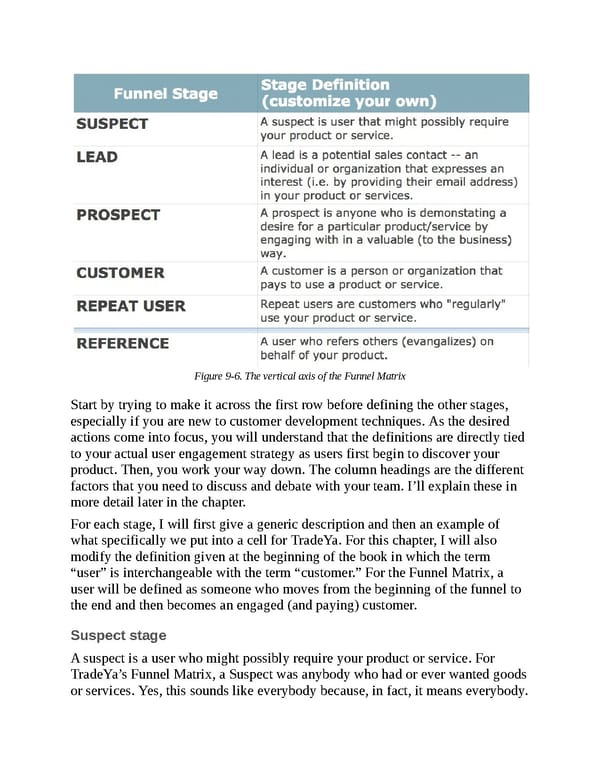Figure 9-6. The vertical axis of the Funnel Matrix Start by trying to make it across the first row before defining the other stages, especially if you are new to customer development techniques. As the desired actions come into focus, you will understand that the definitions are directly tied to your actual user engagement strategy as users first begin to discover your product. Then, you work your way down. The column headings are the different factors that you need to discuss and debate with your team. I’ll explain these in more detail later in the chapter. For each stage, I will first give a generic description and then an example of what specifically we put into a cell for TradeYa. For this chapter, I will also modify the definition given at the beginning of the book in which the term “user” is interchangeable with the term “customer.” For the Funnel Matrix, a user will be defined as someone who moves from the beginning of the funnel to the end and then becomes an engaged (and paying) customer. Suspect stage A suspect is a user who might possibly require your product or service. For TradeYa’s Funnel Matrix, a Suspect was anybody who had or ever wanted goods or services. Yes, this sounds like everybody because, in fact, it means everybody.
 UX Strategy: How to Devise Innovative Digital Products that People Want Page 251 Page 253
UX Strategy: How to Devise Innovative Digital Products that People Want Page 251 Page 253